How to easily control a powerful AC load
 Sometimes you need a weak signal from the microcontroller to turn on a powerful load, such as a lamp in the room. This problem is especially relevant for smart home developers. The first thing that comes to mind is a relay. But do not rush, there is a better way :)
Sometimes you need a weak signal from the microcontroller to turn on a powerful load, such as a lamp in the room. This problem is especially relevant for smart home developers. The first thing that comes to mind is a relay. But do not rush, there is a better way :)
In fact, the relay is a continuous hemorrhage. Firstly, they are expensive, and secondly, to power the relay coil, an amplifying transistor is needed, since the weak leg of the microcontroller is not capable of such a feat. Well, and thirdly, any relay is a very bulky design, especially if it is a power relay designed for high current.
If we are talking about alternating current, then it is better to use triacs or thyristors. What it is? And now I’ll tell you.
If on the fingers, then the thyristor is similar to a diode, even the designation is similar. Passes current in one direction and does not let in the other. But he has one feature that distinguishes it from the diode radically - the control input.
If the opening current is not applied to the control input, the thyristor will not pass current even in the forward direction. But it is worth giving at least a brief impulse, as it immediately opens and remains open as long as there is direct voltage. If the voltage is removed or polarity reversed, the thyristor will close ...
Home-made device for protecting the motor from under-phase conditions and overload
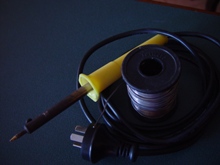 As typical elements of motor protection, electrothermal relays are most often used. Designers are forced to overestimate the rated current of these relays, so that there are no trips at startup. The reliability of such protection is low, and a large percentage of engines fail during operation.
As typical elements of motor protection, electrothermal relays are most often used. Designers are forced to overestimate the rated current of these relays, so that there are no trips at startup. The reliability of such protection is low, and a large percentage of engines fail during operation.
The circuit of the motor protection device (see the figure) from out-of-phase modes and overload is characterized by increased reliability. Transistors VT1, VT2 together with the elements connected to them form an analog of a dynistor, the switching voltage of which (Uin) depends on the ratio R6 / R7. With the ratings indicated on the diagram 30 V < Uon <36 V in the temperature range -15 Resistors R1 ... R3 form a vector adder, at the output of which the voltage is 0, if the motor is full-phase. The transformer T1 is a current sensor of one phase of the electric motor. The outputs of the current sensor and vector adder are connected to a rectifier made on diodes VD1 ... VD3. In normal mode, the voltage at the rectifier output is determined by the current in the primary winding T1 and the ratio of turns wl / w2. Using a resistor R4, this voltage is set below U on VT1 and VT2. If phase failure or motor overload occurs, then ...
What you need to know when installing an RCD and grounding device in an apartment or private house
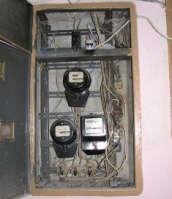 It is not necessary to use RCDs or electronically controlled difavtomats, for example, IEK AD 12, IEK AD 14 diflavtomats, when the phase or neutral conductor breaks, the power of the electronic control circuit is de-energized and the differential protection stops working. There is a diffrel with an electronic control circuit in which, in the event of a power failure, the consumer shuts down in the likeness of a starter. To connect the consumer after resuming power, you must manually turn on this type of diffrel. This type of differential switch can be used to power electrical appliances where it is dangerous to re-supply voltage after a power failure.
It is not necessary to use RCDs or electronically controlled difavtomats, for example, IEK AD 12, IEK AD 14 diflavtomats, when the phase or neutral conductor breaks, the power of the electronic control circuit is de-energized and the differential protection stops working. There is a diffrel with an electronic control circuit in which, in the event of a power failure, the consumer shuts down in the likeness of a starter. To connect the consumer after resuming power, you must manually turn on this type of diffrel. This type of differential switch can be used to power electrical appliances where it is dangerous to re-supply voltage after a power failure.
With improperly made grounding can be more dangerous than without grounding !!!
Grounding without an RCD or grounding is prohibited !!!
Do not connect the ground terminals of outlets and electrical appliances protected only by circuit breakers that protect only wiring from short circuits in the phase-neutral and phase-phase circuits, to natural, artificial and especially home-made grounding. You expose yourself and others to mortal danger. Automata are triggered only by currents many times higher than the nominal value of the automaton.Natural, artificial and especially home-made grounding in the vast majority of cases has a resistance that cannot create such currents and, accordingly, carry out a protective shutdown of automatic machines within 0.4 seconds normalized by safety ...
Why do I need an oscilloscope?
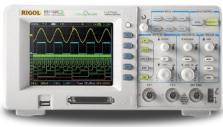 Sooner or later, any novice electronics engineer, if he does not give up his experiments, will grow to circuits where you need to monitor not just currents and voltages, but the operation of the circuit in dynamics. This is especially often needed in various generators and pulse devices. There is nothing to do without an oscilloscope!
Sooner or later, any novice electronics engineer, if he does not give up his experiments, will grow to circuits where you need to monitor not just currents and voltages, but the operation of the circuit in dynamics. This is especially often needed in various generators and pulse devices. There is nothing to do without an oscilloscope!
Scary device, huh? A bunch of pens, some buttons, and even the screen and nifiga is not clear what is here and why. Nothing, we’ll fix it now. Now I’ll tell you how to use the oscilloscope.
In fact, everything is simple here - the oscilloscope, roughly speaking, is just ... voltmeter! Only cunning, able to show a change in the shape of the measured voltage ...
What tool should an electrician have, except for pliers and a set of screwdrivers
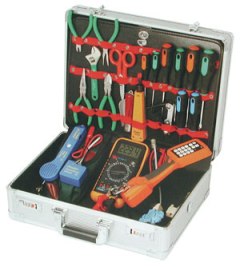 Typically, an electrician going to a customer’s call takes a suitcase or a handbag full of various pieces of iron, screws and dowels, as well as an electrician’s tool in his handbag - the glands with which the electrician performs certain tasks. What tool should he be an electrician?
Typically, an electrician going to a customer’s call takes a suitcase or a handbag full of various pieces of iron, screws and dowels, as well as an electrician’s tool in his handbag - the glands with which the electrician performs certain tasks. What tool should he be an electrician?
Rule of an isolated tool. The most basic association of an electrician with pliers. Pliers (pliers) must be with insulated handles. The insulation material for the pens can be either plastic or rubber. The main thing is that the insulation of the handles can withstand a voltage of 1000 volts. In practice, it’s convenient to have a pair of pliers with you — some medium or small, others large.
As well as pliers, screwdrivers will always come in handy ...
What do we take on a hike?
Collecting an electrician's suitcase is very similar to picking a backpack on a camping trip. It is necessary to foresee all the little things and take as many tools as possible so as not to get into the prosak on a call from a client. However, here, just as in a hiking trip, it is important not to overdo it, otherwise you can simply not bring a suitcase. So, what else does the electrician have in his bag, except for pliers and a set of screwdrivers? ...
About grounding and grounding for "dummies"
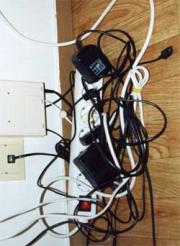 My bitter experience as an electrician allows me to say: If you have the "grounding" done as it should - that is, the shield has a connection point for the "grounding" conductors, and all the plugs and sockets have "grounding" contacts - I envy you, and there’s nothing for you worry.
My bitter experience as an electrician allows me to say: If you have the "grounding" done as it should - that is, the shield has a connection point for the "grounding" conductors, and all the plugs and sockets have "grounding" contacts - I envy you, and there’s nothing for you worry.
Grounding Rules
What is the problem, why can not you connect the ground wire to the heating or water pipes?
Actually, in urban conditions, stray currents and other interfering factors are so great that anything can appear on the heating battery. However, the main problem is that the trip current of the circuit breakers is quite large. Accordingly, one of the options for a possible accident is a breakdown of a phase to a case with a leakage current just somewhere on the machine operation boundary, that is, in the best case, 16 amperes. Total, we divide 220v by 16A - we get 15 ohms. Just some thirty meters of pipes, and get 15 ohms. And the current flowed somewhere, in the direction of not sawn wood. But that is no longer important. The important thing is that in the next apartment (up to which 3 meters, and not 30, the voltage on the tap is almost the same 220.), but on, say, the sewer pipe - a real zero, or so.
And now the question is - what will happen to the neighbor if he, sitting in the bathroom (connected to the sewer by opening the cork), touches the tap? Guessed?
The prize is prison. According to the article on violation of electrical safety rules that caused the victim.
Do not forget that you can not do an imitation of the "grounding" circuit, connecting the "zero working" and "zero protective" conductors in the Euro socket, as some "craftsmen" sometimes practice. Such a replacement is extremely dangerous.Cases of burning off the “working zero” in the shield are not uncommon. Thereafter ...
How to make a welding machine from an electric motor
 The idea of producing transformers from electric motor stators was practiced twenty years ago and was popular among home-made ones. By the way, the income brought tangible. For 50-75 Soviet carbovanets, such a product could be disposed of in one to two days. What I did. There have even been publications on this subject in The Modeler-Designer and The Inventor and Rationalizer.
The idea of producing transformers from electric motor stators was practiced twenty years ago and was popular among home-made ones. By the way, the income brought tangible. For 50-75 Soviet carbovanets, such a product could be disposed of in one to two days. What I did. There have even been publications on this subject in The Modeler-Designer and The Inventor and Rationalizer.
A little later there were also publications about welding transformers from LATRs. And if there were no special problems with transformers from LATRs, then with those from engines, the results for self-made ones were very far from the calculated ones. And the reason for this is a lack of knowledge in electrical engineering, and magazines published material hiding all underwater currents.
It was more like an instruction to a young dushman, with landmine recipes. All that was left was to shout: “Allahu akbar” or “Banzai” and plug into the outlet. And then, at least, burnt traffic jams, as a maximum - a cord to the electricity meter and a lot of flattering reviews addressed to the inventors and their parents.
Of course, I understood all the reasons for the failures, but I did not want to give out secrets, so as not to breed competitors. And only after I found myself a more interesting income, in the form of electric rods, I began to share information. I then still lived in Samara and the opportunity to earn money on fish attracted me much more than groan and sweat over the welders.
So, about transformers. First you need to choose the right motor ...
Which is better - do the electrical installation yourself or call professional electricians?
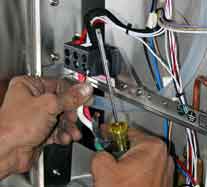 In bookstores and in ruins, a huge number of books and brochures with titles such as “Wiring in 5 minutes”, “To Yourself an Electrician”, “100 Tips for a Home Master - Installation of Wiring” and other similar publications. Looking at this “splendor”, you might think that wiring is a very simple task that you can really learn in five minutes. But this is not so.
In bookstores and in ruins, a huge number of books and brochures with titles such as “Wiring in 5 minutes”, “To Yourself an Electrician”, “100 Tips for a Home Master - Installation of Wiring” and other similar publications. Looking at this “splendor”, you might think that wiring is a very simple task that you can really learn in five minutes. But this is not so.
This will be confirmed to you by any professional for whom the installation of sockets, automatic machines, electrical panels, etc. this is not a “hobby”, as the authors of books represent reality, but a profession. Not only does wiring require a mass of specific knowledge and skills, it also requires compliance with safety regulations. For this reason, following some of the tips from the compilers of Home Master collections is simply dangerous.
Any work with electric current is classified as dangerous to human life if the voltage in the line is more than a hundred volts. Therefore, it is quite natural that only persons who have undergone special instruction and training and possess debugged skills in both electrical installation and first aid in case of electric shock are allowed to do such work. If we say the "letter of the law", then only people with a third qualification group for electrical safety meet these requirements.
And what can lie in wait for a layman? ...
